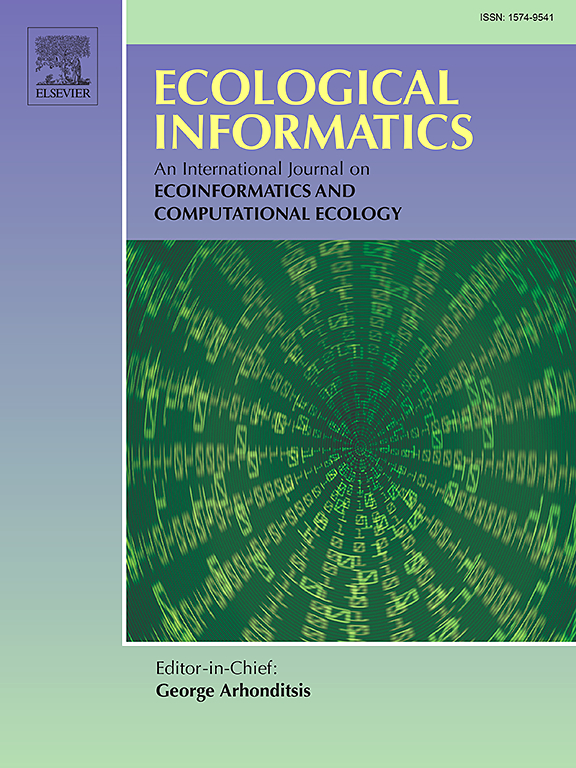Divergent dynamics of surface water patterns and structures in Europe's coastal-zone basins
IF 5.8
2区 环境科学与生态学
Q1 ECOLOGY
引用次数: 0
Abstract
Surface water bodies are essential components of terrestrial ecosystems and play critical roles in sustainable development. Coastal-zone basins (CZBs), shaped by human activity and land–sea interactions, have undergone rapid urban expansion, landscape fragmentation, wetland degradation, and increased flood risk. However, comprehensive analyses of surface water dynamics in coastal zones on a continental scale are limited. This study examines the spatiotemporal evolution of surface water in Europe's CZBs, a region with a long history of development. The water bodies were classified into five types: weak seasonal water bodies (WSWBs), seasonal water bodies (SWBs), weak permanent water bodies (WPWBs), strong permanent water bodies (SPWBs), and permanent water bodies (PWBs). Using Landsat remote-sensing imagery from 1984 to 2023, we assessed the intensity of water-body transformations. WSWBs dominated the surface water composition, accounting for 76.94 % of the total, with concentrated patches in the eastern CZBs and sporadic distributions in the west. PWBs, comprising only 1.35 %, were primarily located in the Balkan, Apennine, and Iberian Peninsulas, and the western European plains. Between 1984 and 2023, the total surface water area exhibited a fluctuating decline, with PWBs, SWBs, and WPWBs decreasing by 97.2, 96.1, and 87 %, respectively. Conversely, SPWBs and WSWBs increased by 54.8 and 67.7 %, respectively. The degree of fragmentation varied over time, with higher fragmentation observed on the northern Iberian Peninsula, northwestern European plains, central Apennine Peninsula, and southern Balkan Peninsula. This study provides essential data for supporting biodiversity conservation, water resource management, and sustainable coastal development.
欧洲海岸带盆地地表水形态和结构的发散动力学
地表水是陆地生态系统的重要组成部分,在可持续发展中发挥着关键作用。海岸带盆地是由人类活动和陆海相互作用形成的,经历了快速的城市扩张、景观破碎化、湿地退化和洪水风险增加。然而,在大陆尺度上对海岸带地表水动力学的综合分析是有限的。本研究考察了具有悠久发展历史的欧洲czb地区地表水的时空演变。将水体分为弱季节性水体(WSWBs)、季节性水体(SWBs)、弱永久性水体(WPWBs)、强永久性水体(SPWBs)和永久性水体(PWBs) 5类。利用1984 - 2023年的Landsat遥感影像,评估了水体变化的强度。水体组成主要以西南海域为主,占总水体的76.94%,东部呈斑块状集中分布,西部呈零星分布。pwb仅占1.35%,主要分布在巴尔干半岛、亚平宁半岛和伊比利亚半岛以及西欧平原。从1984年到2023年,总地表水面积呈波动下降趋势,压水板、SWBs和WPWBs分别减少了97.2、96.1和87%。相反,SPWBs和WSWBs分别增长了54.8%和67.7%。破碎化程度随时间而变化,伊比利亚半岛北部、欧洲西北部平原、亚平宁半岛中部和巴尔干半岛南部破碎化程度较高。该研究为支持生物多样性保护、水资源管理和沿海可持续发展提供了必要的数据支持。
本文章由计算机程序翻译,如有差异,请以英文原文为准。
求助全文
约1分钟内获得全文
求助全文
来源期刊

Ecological Informatics
环境科学-生态学
CiteScore
8.30
自引率
11.80%
发文量
346
审稿时长
46 days
期刊介绍:
The journal Ecological Informatics is devoted to the publication of high quality, peer-reviewed articles on all aspects of computational ecology, data science and biogeography. The scope of the journal takes into account the data-intensive nature of ecology, the growing capacity of information technology to access, harness and leverage complex data as well as the critical need for informing sustainable management in view of global environmental and climate change.
The nature of the journal is interdisciplinary at the crossover between ecology and informatics. It focuses on novel concepts and techniques for image- and genome-based monitoring and interpretation, sensor- and multimedia-based data acquisition, internet-based data archiving and sharing, data assimilation, modelling and prediction of ecological data.
 求助内容:
求助内容: 应助结果提醒方式:
应助结果提醒方式:


